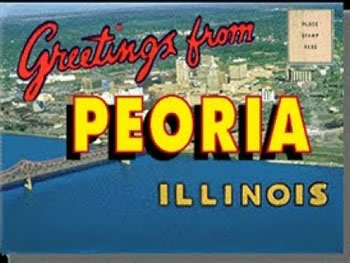Vaudeville Circuits
 So, how did all these performers come together?
So, how did all these performers come together?
Well, vaudeville shows were put together by booking agents and managers. As would become the case with movies, different groups of agents and managers battled for control of theaters and performers.
The performers themselves responded to the agents control by forming their own union called the White Rats. The White Rats tried to strike several times but, at least in the short run, generally failed to win better conditions. However, the Rats were the forerunner of Actors Equity, which still represents performers.
Although not all the acts in vaudeville shows necessarily traveled, most did. The shows were more or less constantly on tour. There were a series of different vaudeville circuits, pathways through a series of cities that vaudeville troops followed. Different circuits were controlled by different entrepreneurs and corporations.
The vaudeville show described on the previous page was at "B. F. Keith's Palace Theater" the "President" of which was Edward F. Albee. Keith and Albee were among the most important vaudeville entrepreneurs. They controlled the "Keith-Albee Circuit." This was mainly composed of theaters in the northeast. The Keith-Albee Circuit eventually joined forces with its greatest rival, the Orpheum circuit, which mostly operated in the western states. Eventually, the Keith-Albee-Orpheum circuit became RKO Pictures, one of the five Majors of classic Hollywood. RKO stood for Radio-Keith-Orpheum.
Here in Texas, the Interstate Circuit, run by John Hoblitzelle was one of the most important vaudeville operations. It was headquartered at the Majestic Theater in Dallas, but Hoblitzelle also also owned the Majestic theaters in other Texas cities. The Interstate Circuit stretched through the south to Atlanta.
Most vaudeville circuits were based in the big cities of the east and west coast. The humor and style of these places was more sophisticated and very much more sexual than was acceptable in most of the country. In places in America that were deeply affected by puritanical strains of Christianity, theater was deeply troubling. This was particularly true in the 19th century. Acting, people argued, was based on a lie. Actors always lied by pretending to be someone they were not. Lying was evil. Hence acting was evil.
Twentieth century America was much more liberal than that. However, vaudeville shows had to promote themselves as wholesome entertainment. They had to tone down many aspects of performance. Vaudeville actors and managers were constantly asking "Will it play in Peoria?" That is, will it appeal to, politely, a broad range of relatively unsophisticated people, or, impolitely, will the rubes and yokels like it?
Next: Vaudeville and race